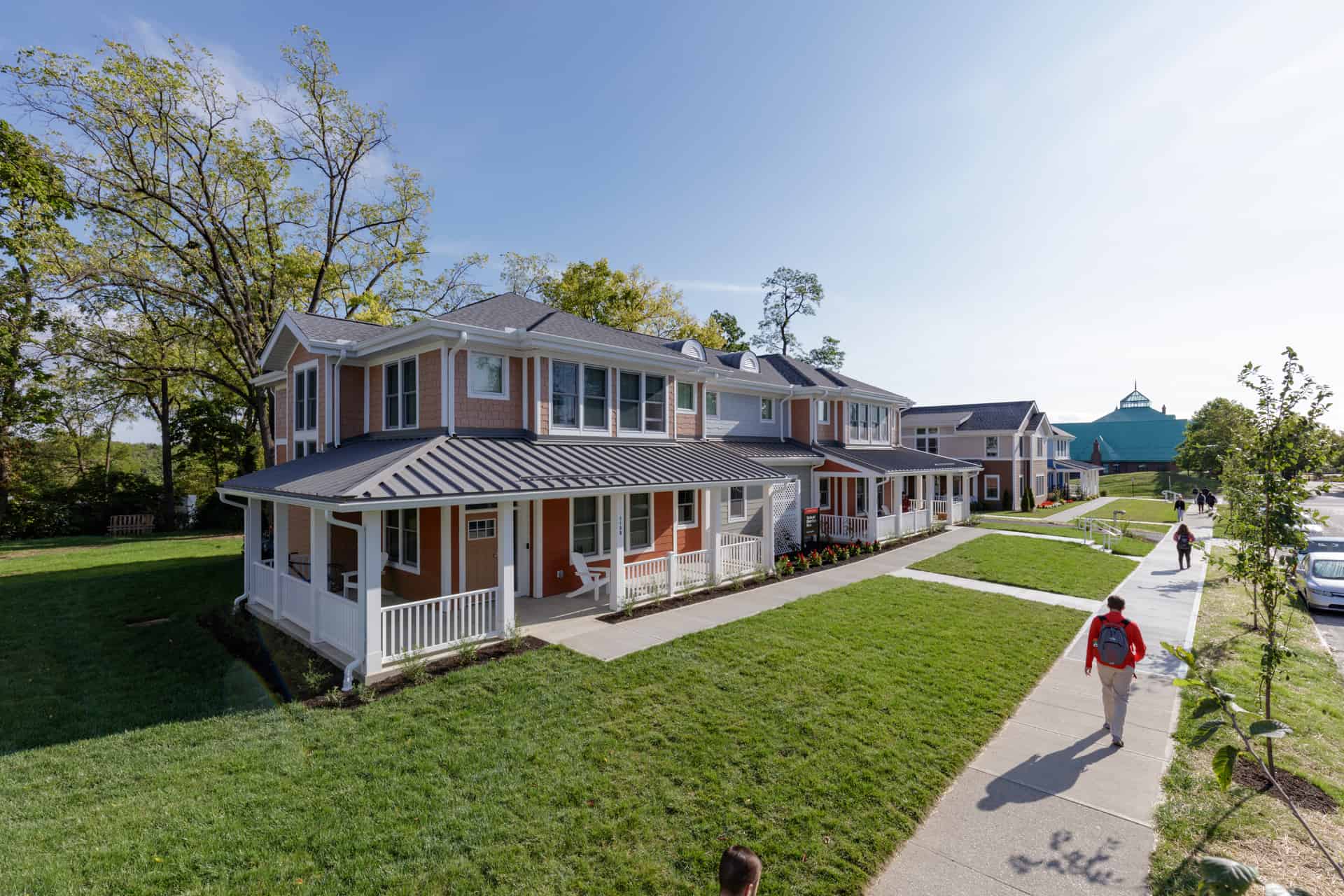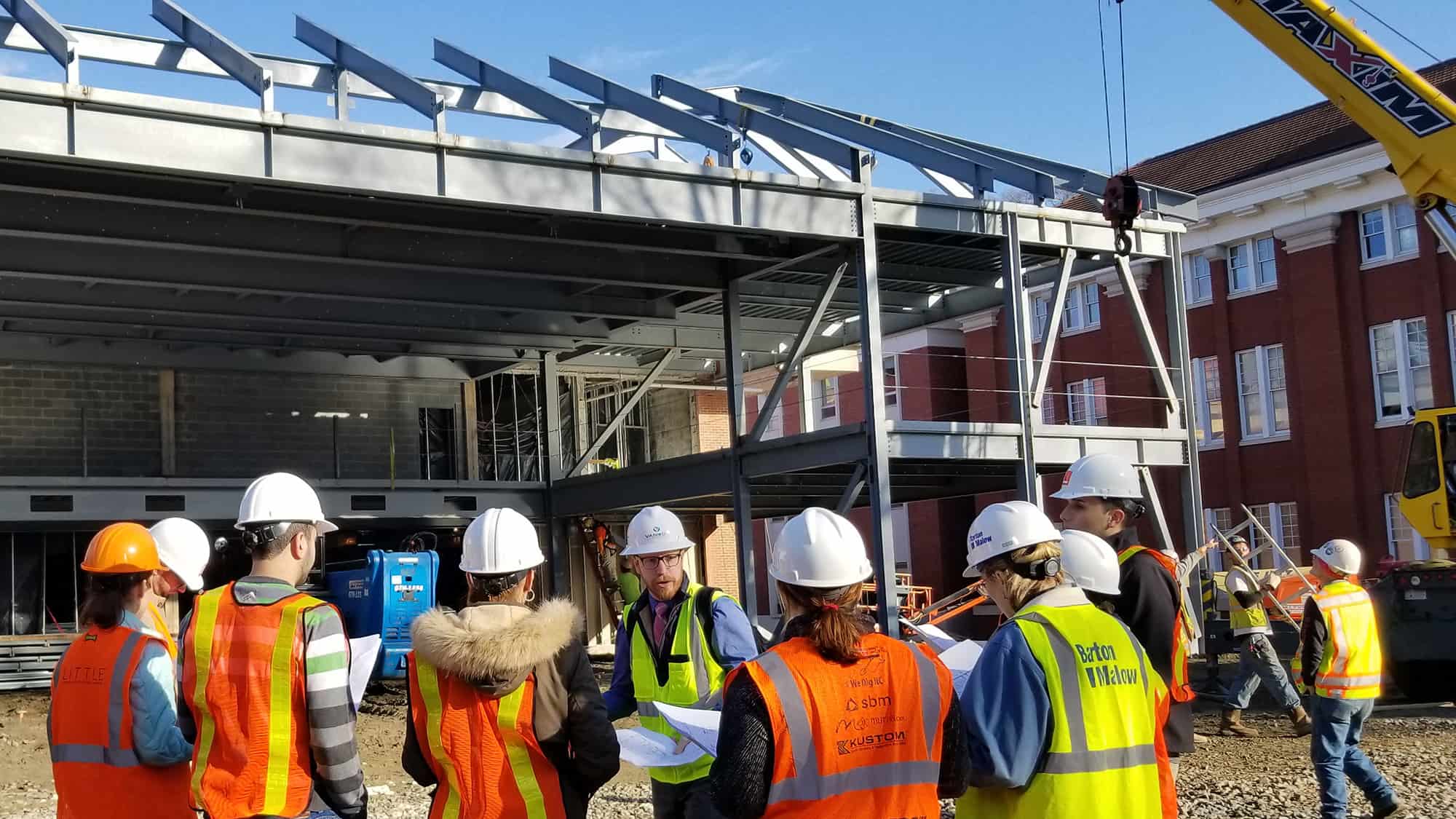There’s no one-size-fits-all approach to construction. Different construction delivery methods best serve different types of projects, timelines, budgets, and specifications. Which is the right approach for your project?
Three of the most widely used construction delivery methods are Design-Bid-Build, Construction Management, and Design-Build. Let’s compare.
Design-Bid-Build
Design-Bid-Build is the most common and traditional project delivery method. It prioritizes competitive bidding, creative design, and owner involvement.
The Design-Bid-Build method functions as part of the open market. The project owner typically selects the design firm based upon qualifications and the contractor based upon the lowest bid. To begin the process, design firms respond to a request for Qualifications (RFQ), and the owner selects the architect that best meets the qualifications. Typically, this a two-step process involving a shortlist and interview. Once the design firm completes all design documents, the owner solicits bids from contractors to complete the scope of work.
In a Design-Bid-Build approach, the owner is more involved throughout the design and construction processes, including the associated risks. The design firm remains connected to the project owner throughout the entire Design-Bid-Build project lifecycle to ensure the proper execution of all design documents. However, because this method removes the contractor from the design process, there is potential for higher project costs after the low bid (change orders) due to the disconnect between the design plan and interpretation of the construction documents.
BENEFITS
- Competitive bidding from multiple contractors results in lower up-front pricing.
- Oversight from architect/design firm throughout the process, as an advocate for the owner, encouraging thorough execution of design documents.
- Affords opportunities to any qualified contractor and usually provides opportunities to smaller disadvantaged contractors and subcontractors.
CHALLENGES
- Underqualified contractors could win work because of a low bid, potentially resulting in a poorly executed project that is costly to remedy.
- More change orders can alter budget and timeline, nullifying the low project cost and creating potentially significant delays.
- Construction costs are not confirmed until the bidding is complete. If construction bids exceed the budget, costly redesign is often required.
LITTLE DESIGN-BID-BUILD PROJECT EXAMPLE

Construction Management at Risk
Instead of bidding the project to general contractors, the owner can hire a Construction Manager at Risk (CMAR) to work closely with the design firm and oversee the design and construction of the project. In this delivery method, the CMAR comes on early in the project to advise on design plans and set a guaranteed maximum price (GMP). The GMP serves as the price threshold for the project.
If the project comes in under this threshold amount, the construction manager could benefit through a cost-sharing agreement. However, if the project exceeds the GMP, the construction manager risks paying the difference.
The CMAR solicits estimates from subcontractors throughout the design process to best predict project cost. Once the design phase is complete, the CMAR secures bids from subcontractors and assembles a construction team based on which subcontractors best meet the project needs without exceeding the GMP threshold. The CMAR manages all aspects of subcontractor relationships.
BENEFITS
- Owner does not need internal staff to lead the design and construction process as the CMAR manages most details of the project’s budget, schedule, and construction.
- CMAR provides a guaranteed maximum price (GMP) and assumes the risk if costs exceed this price threshold.
- Projects can be fast-tracked as construction can start before the design phase is fully complete.
CHALLENGES
- High amount of trust and communication is required amongst the owner, architect, and CMAR.
- Potential for higher up-front costs because CMAR needs to exercise extreme caution due to guaranteed GMP.
- Contract must be negotiated fully and written clearly to establish responsibilities of all parties.
LITTLE CONSTRUCTION MANAGEMENT AT RISK PROJECT EXAMPLE

Design-Build
A single entity manages Design-Build projects—the general contractor. This delivery method prioritizes controlled costs, fast timelines, quality of deliverables, and lower owner risks.
Design-Build requires close collaboration between the design firm and contractor. The contractor owns the Design-Build project contract, and the architect works for the contractor. However, both entities make up a team hired simultaneously. Because the architect and contractor must partner to submit a Design-Build RFP, this delivery method requires a strong relationship rooted in mutual respect.
The Design-Build delivery method is a one-stop shop for completing a project from start to finish. Due to the contractor’s involvement from the beginning, project pricing tends to be more consistent. The Design-Build project teams work closely together in a collaborative environment, reducing the need for the owner to mediate. Qualifications and steps in the Design-Build process vary by state.
BENEFITS
- Streamlined communication with one point of contact simplifies the project delivery process.
- Speed to market increases by avoiding the lengthy conventional bid process and setting a firm budget early on.
- Thoughtful collaboration between design firm and contractor canyield a high quality of work.
CHALLENGES
- Architect may have less control of the design since the contractor holds the contract and is the point-of-contact for the owner.
- Potentially limiting subcontractors since their identification happens early in the process.
- Owner may have less control during the design and construction phase, requiring the utmost trust in the Design-Build team.
Within the right project scope, the Design-Build process can provide a simplified approach to meet your specific budget, deliverables, and timeline needs.
LITTLE DESIGN-BUILD PROJECT EXAMPLE

While other construction delivery methods — like Integrated Project Delivery (IPD) — exist, Design-Bid-Build, Construction Manager at Risk, and Design-Build are the most common. At Little, we are well-versed in these methods and can help you navigate the best delivery method for your next construction project. Connect with us below.

